Huawei plans for an Android alternative called HongMeng () OS were leaked in 2019 following tensions with the US government that prevented them from working with American and other companies around the world. The operating system was later called HarmonyOS for the overseas markets, and Huawei released HarmonyOS 2.0 beta in September of last year, where we learned it was heavily inspired by Android, replacing Google GMS with Huawei’s own HMS, but using the same development tools.
We also got a roadmap at the time with the company planning to launch HarmonyOS devices in 2021. Developers first got the HiSpark WiFi IoT RISC-V development board to play with the new OS in October 2020, but now the company has finally announced HarmonyOS consumer devices with three Huawei MatePad tablets, and two Huawei 3 watches.
Huawei MatePad HamornyOS tablets
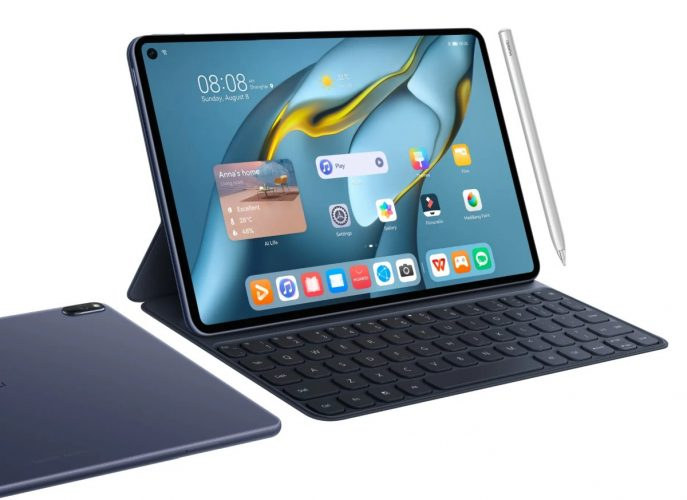
Three models have been introduced with a mix of Kirin and Snapdragon processors:
- Huawei MatePad Pro 12.6 with a 12.6-inch 2560 x 1600 OLED display, Huawei Kirin 9000E octa-core Cortex-A77/A55 processor, 8GB of RAM, up to 256GB of storage, a 10,000 mAh battery, triple rear camera (13MP+8MP+depth), and 8MP front-facing camera, 4-mic array, and eight! Harman speakers
- Huawei MatePad Pro 10.8 with a 10.8-inch 120 Hz IPS display, a Qualcomm Snapdragon 870 processor, and a smaller 7,250 mAh battery. The rest of the specs are similar to the larger model.
- Huawei MatePad 11 with an 11-inch 2560 x 1600 IPS LCD display with a 120 Hz refresh rate, a Qualcomm Snapdragon 865+ processor, up to 6GB of RAM, up to 128GB of storage, a 13 MP rear camera, an 8MP front-facing camera, a 7,250 mAh battery, and four speakers.
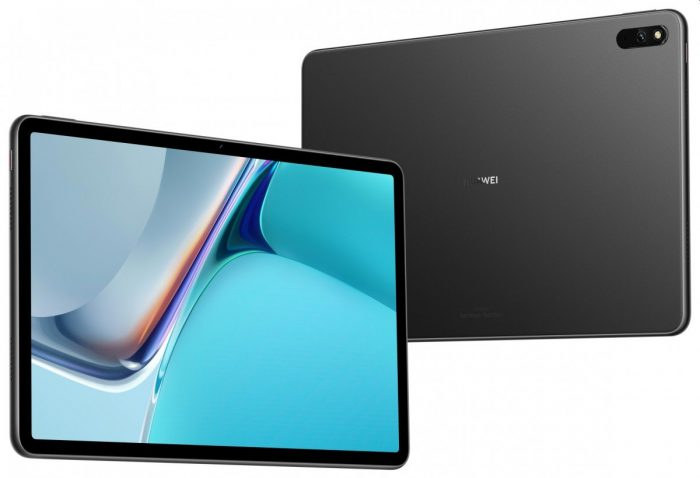
All three tablets will come with an optional keyboard and stylus, and will soon be sold in China and/or Europe. MatePad Pro 12.6 will sell for 4,999 CNY (~$780 US) and MatePad Pro 10.8 for 3,799 CNY (~$595 US) when they go on sale in China on June 10. The low-end Huawei MatePad 11 will sell for 399 Euros (or around $485) in Europe.
While under the hood, HarmonyOS may be based on AOSP. the user interface looks different, and Huawei brought some interesting features such as multi-window mode (up to four windows) and the ability to use the tablet as a second screen for a Windows PC.
Huawei Watch 3 and 3 Pro
HarmonyOS will be used on a complete range of devices from low-end devices with as little as 128KB RAM up to phones, laptops, and the tablets mentioned above with over 4GB RAM. So Huawei also launched two HarmonyOS smartwatches with Huawei Watch 3 and Watch 3 Pro.
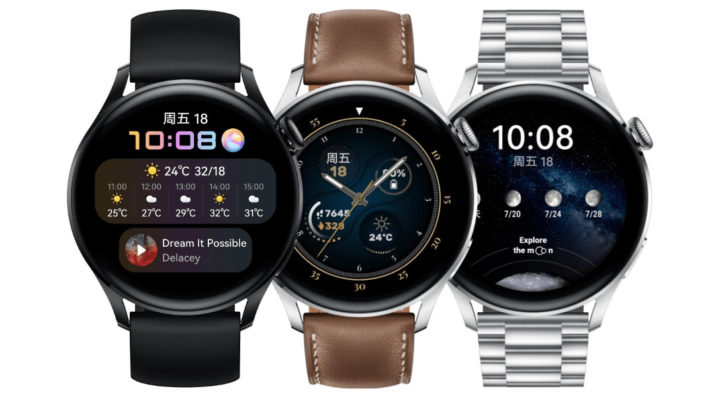
The new watches are not exactly low-end, as they come with 2GB RAM and 16GB storage which should be plenty for wearable devices. Both are equipped with a 1.43-inch AMOLED color circular display, several sensors including an optical heart rate sensor and body temperature sensor, eSIM with 4G cellular connectivity, GNSS support (GPS, GLONASS, Galileo, Beidou, and QZSS), and 5 ATM water resistance.
Huawei Watch 3 Pro model does offer a longer battery life of up to 21 days (vs 14 days) in power saving mode) or up to 5 days (vs 3 days) in smart mode with 4G enabled, and a more premium “titanium” design.
Both devices are compatible with smartphones running Android 6.0+ and iOS 9.0+, but there’s no mention of HarmonyOS smartphones’ compatibility. I’m sure it’s coming soon as we’ll see further below.
The Huawei Watch 3 and Watch 3 Pro are up for pre-order now in CHina for respectively 2,600 RMB (~$410) and 3,300 RMB (~$515) with shipping scheduled to start on June 11. You can find more details on the product page.
Over 100 existing devices to be upgraded to HarmonyOS
Launching new devices with HarmonyOS is nice, but what about the many existing Huawei devices, will they get an update too? Well, it depends, but the company is committed to providing upgrades to over 100 devices from smartphones to tablets. Roll-outs progressing over time with some getting an upgrade this week, and others needing to wait until H1 2022 depending on the devices.
You can find the full list of devices and schedules for HarmonyOS updates on HuaweiCentral, and if you are really interested in HarmonyOS, go ahead and watch the ~90 minutes presentation.
Via Liliputing, GSM Arena, and XDA developers

Jean-Luc started CNX Software in 2010 as a part-time endeavor, before quitting his job as a software engineering manager, and starting to write daily news, and reviews full time later in 2011.
Support CNX Software! Donate via cryptocurrencies, become a Patron on Patreon, or purchase goods on Amazon or Aliexpress


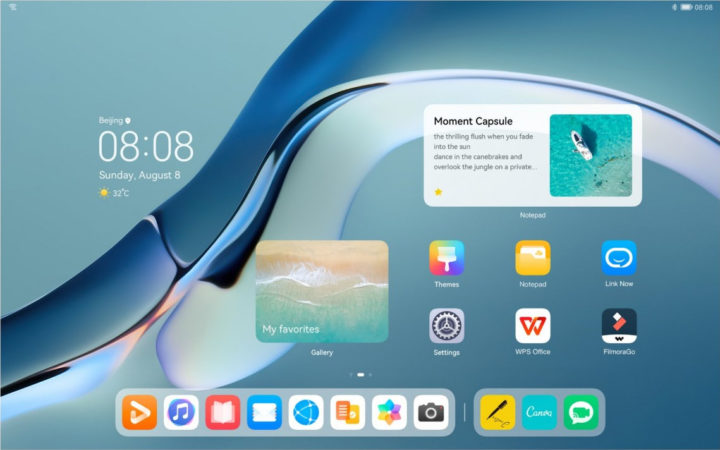
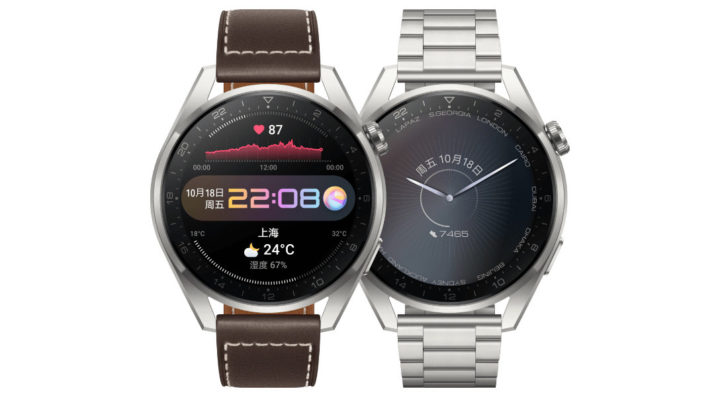
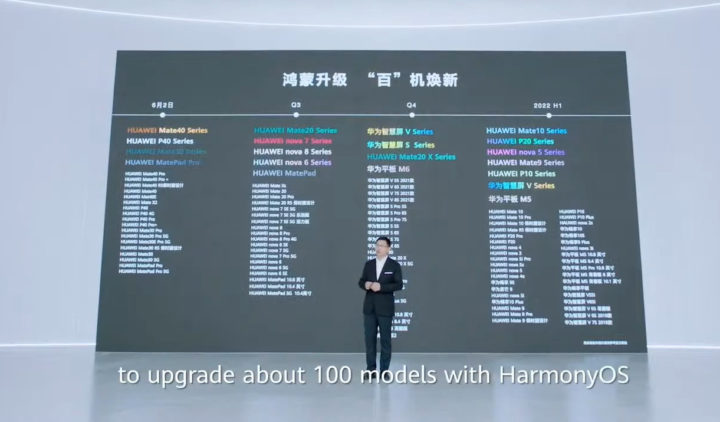



Seems to be a brand, not a thing. Right now it brands two things: a rebuild of AOS + replacements for Google proprietary bits (in tablets and phones), and a new IoT OS (in the watches).
ChiCom OS….military grade hacking API.